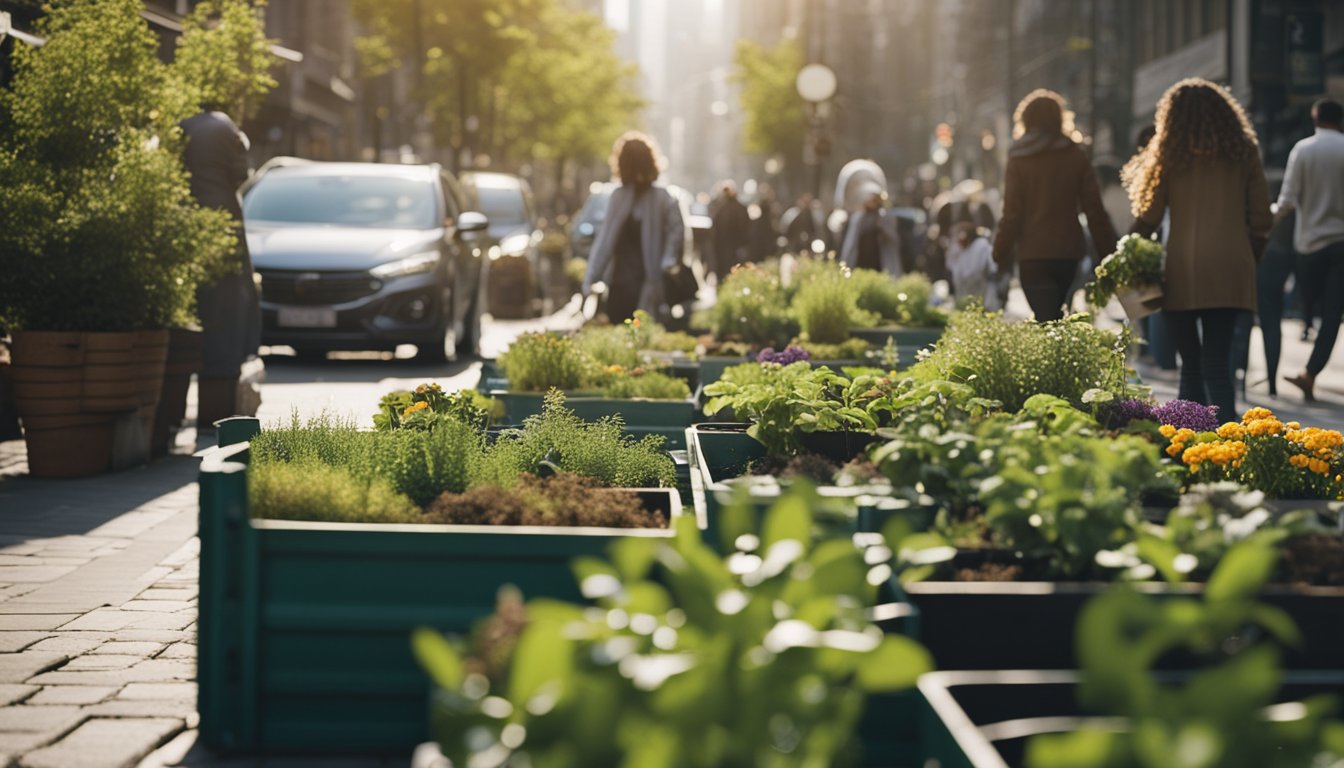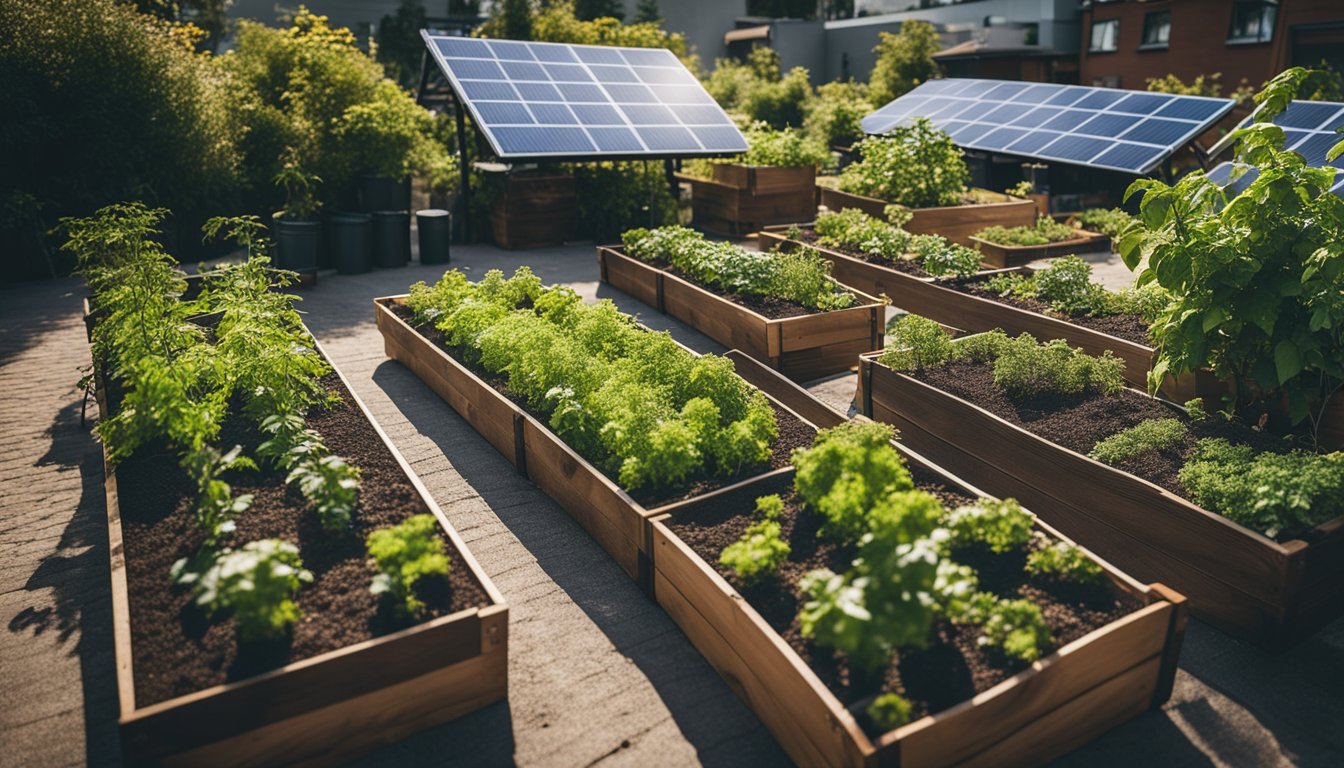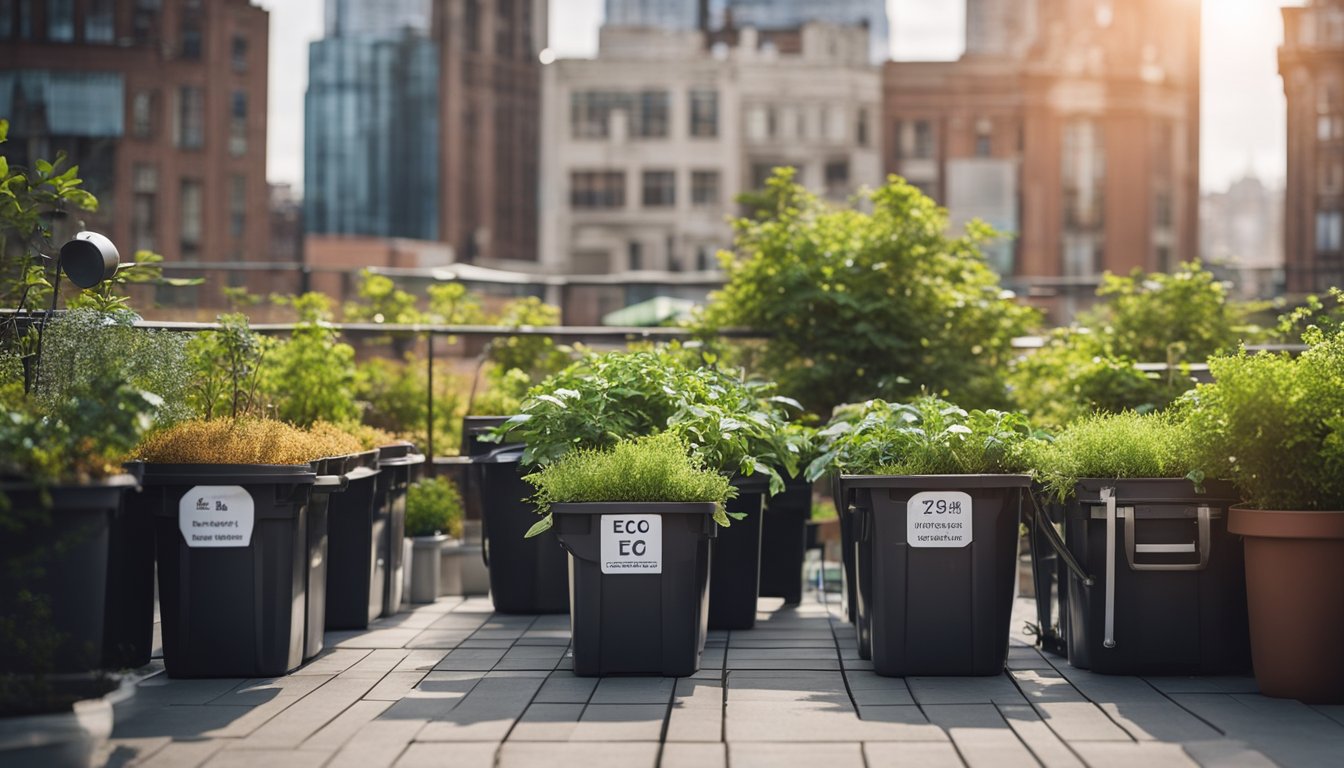Late updated: 08 Feb 2025 10:02
Written by: Sarah Hollister
Eco-Friendly Tips For Beginner-Friendly Urban Gardening: Simple Steps to Start
Urban gardening offers us a wonderful opportunity to bring green spaces into our urban lives, promoting sustainability and enhancing our well-being. As our living spaces shrink and our awareness of environmental issues grows, cultivating an eco-friendly garden on balconies, patios, or even window sills has never been more relevant. For those of us starting on this journey, prioritising eco-friendly practices not only nurtures the environment but also ensures a flourishing garden that aligns with our values.

Understanding the essentials of space management is crucial for urban gardening in small areas. Strategic use of space can transform even the tiniest balcony into a thriving garden. Choosing location wisely for optimal sunlight and selecting sustainable materials play key roles in creating a successful urban garden. Earth-friendly techniques like composting and rainwater harvesting help us conserve resources while growing beautiful and bountiful plants.
Eco-friendly urban gardening is not just about growing plants; it’s a lifestyle choice that brings nature closer to us while benefiting our environment. Our gardens can support biodiversity by providing habitats for beneficial insects and wildlife. Through mindful gardening, we contribute to a healthier ecosystem and enjoy the simple pleasures of nurturing life.
Key Takeaways
- Eco-friendly practices are essential for beginners.
- Small spaces can become thriving gardens.
- Sustainability supports biodiversity and wellness.
Initial Considerations and Setup
Starting an urban garden involves several key considerations, from understanding your unique environment to properly selecting containers and choosing plants suited to your space. These steps ensure a successful and rewarding urban gardening experience.
Understanding Your Environment
Our environment directly influences the types of gardens we can create. Sunlight exposure is crucial in determining which plants will thrive. Balcony gardens and rooftop gardening spaces require us to evaluate how much direct sunlight they receive during the day. This helps us decide which plants to choose and where to place them for optimal growth.
In densely populated areas, such as a concrete jungle, it’s important to take into account your local microclimates. These microclimates can create varying temperatures and humidity levels, which affect plant growth. Understanding your hardiness zone is also vital. This knowledge aids us in selecting plants that can survive the winter months without extreme measures.
Community gardens offer a broader scope for growing a wide variety of plants. Engaging with these spaces might provide access to shared knowledge and resources. By gauging the specific attributes of our environment, we set a solid foundation for our urban garden's success.
Choosing Suitable Containers
Selecting the right containers can make a difference in plant health and maintenance. When two of us are gardening on a balcony or rooftop, space might be limited. We should look for containers that fit easily into available nooks and crannies. Opt for containers that allow for adequate root growth while maintaining soil moisture.
Material: Choose between durable options like ceramic, plastic, or metal. Each material offers different benefits—plastic is lightweight, ceramic retains moisture, and metal is resilient.
Drainage is equally important. Containers should have drainage holes to prevent waterlogging, which can lead to root rot. Adding pebbles or broken pottery at the bottom can improve drainage.
Container size will vary based on plant type. Larger plants need more soil and space, while smaller herbs can grow well in compact containers. Careful consideration of these aspects ensures our plants have the best conditions for growth.
Selecting the Right Plants
Selecting plants is key to creating a thriving urban garden. We should prioritise plants that match our space's conditions, including light availability and temperature variations. For sunlit balconies, choose sun-loving plants such as tomatoes or strawberries. Shadier spaces are ideal for plants like lettuce or ferns.
Let’s consider our hardiness zone, as this will guide us in picking plants that can withstand local climatic conditions. Incorporating native species can also be beneficial, as they are accustomed to the local environment and often require less maintenance.
Herbs and vegetables are common choices for urban gardening. They offer the advantage of being useful in cooking and are relatively easy to grow. By carefully selecting the appropriate plants, we enhance both the beauty and productivity of our urban garden.
Maintaining an Eco-Friendly Urban Garden

Creating a sustainable urban garden requires thoughtful practices that focus on organic soil management, efficient irrigation, and natural pest control. Adopting eco-friendly methods helps ensure a thriving garden that is beneficial to both the environment and our well-being.
Organic Soil and Fertilisation
A robust garden begins with healthy soil. We should focus on enriching our soil with organic matter. Composting kitchen scraps and garden waste provides a natural fertiliser that enhances soil quality.
The use of high-quality potting mix is also beneficial. It provides essential nutrients and supports plant growth.
Incorporating organic fertilisers, like bone meal or fish emulsion, can improve soil fertility without the negative impact of chemical fertilisers. Regularly checking soil pH and nutrient levels ensures optimal conditions for our plants.
Irrigation and Water Conservation
Efficient water use is vital in maintaining an eco-friendly garden. Drip irrigation and mulching are excellent strategies for conserving water. Drip irrigation delivers water slowly and directly to plant roots, minimising evaporation.
Mulching around plants reduces water loss, suppresses weeds, and enhances soil quality. Collecting rainwater is another practical approach. It provides a sustainable water source, reducing dependence on treated water.
We can also practice watering techniques such as deep watering, which encourages deep root growth and reduces the need for frequent watering.
Pest Control and Plant Health
Maintaining plant health naturally involves using natural pest control methods. Neem oil and insecticidal soap are effective against common pests like aphids without harming the environment.
Encouraging beneficial insects, such as ladybirds and lacewings, helps manage pest populations. Planting diverse species attracts these helpful insects and increases biodiversity.
Regular monitoring of plant health allows for early detection of diseases or infestations. Removing affected leaves or plants promptly helps contain the spread. Rotating crops and companion planting can also prevent pest build-ups and promote a balanced ecosystem in our garden.
Frequently Asked Questions

In the realm of eco-friendly urban gardening, selecting low-maintenance plants, designing sustainable gardens, fostering community involvement, and employing self-sustaining techniques are essential. Employing climate-resilient practices and accessing educational resources can enhance understanding and success in urban gardening projects.
What are some low-maintenance plants suitable for an eco-friendly urban garden?
We recommend herbs like rosemary, mint, and thyme. These require minimal care and grow well in small spaces. Succulents are also excellent choices due to their drought resistance.
How can one design a garden that aligns with eco-friendly principles?
Using recycled containers and organic soil can reduce environmental impact. We can also incorporate companion planting to naturally deter pests and promote healthy growth.
In what ways can a garden be made more sustainable for community involvement?
Creating shared garden spaces allows multiple members to participate. Rainwater harvesting systems can be set up for communal use. We should also encourage plant swaps and shared composting initiatives.
What techniques can beginners implement to start a self-sustaining garden?
Consider setting up a compost bin to recycle kitchen waste into nutrient-rich soil. We can also adopt crop rotation practices to enhance soil fertility and reduce pest build-up.
Which sustainable practices are most effective for urban gardening in a changing climate?
Drought-tolerant plants can conserve water usage. Using mulch helps retain moisture and regulate soil temperature. We should focus on native plants adapted to the local climate.
Could you suggest educational resources for learning about sustainable gardening methods?
Books on permaculture and online forums dedicated to urban gardening are invaluable resources. Local community workshops can provide hands-on experience. We can also explore digital courses from reputed gardening organisations.
